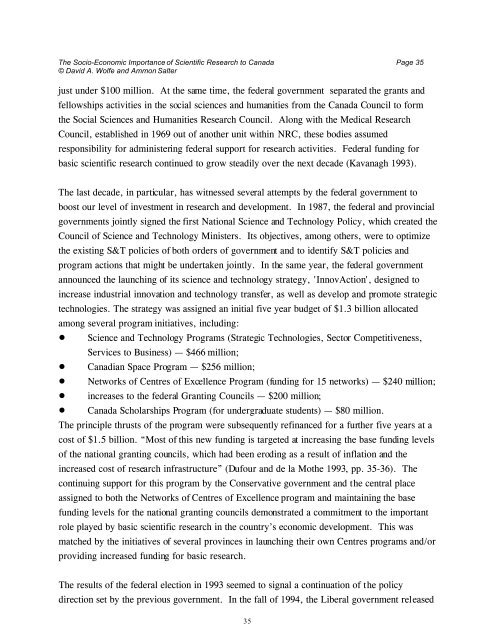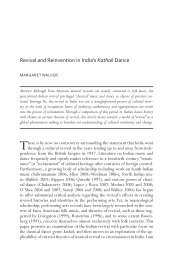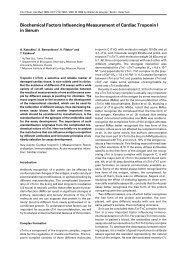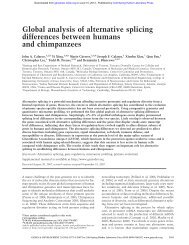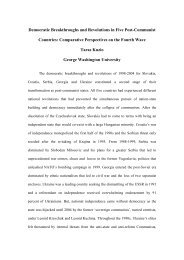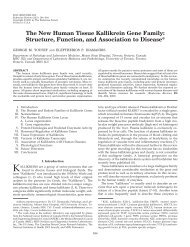The Socio-Economic Importance of Scientific Research To Canada
The Socio-Economic Importance of Scientific Research To Canada
The Socio-Economic Importance of Scientific Research To Canada
Create successful ePaper yourself
Turn your PDF publications into a flip-book with our unique Google optimized e-Paper software.
<strong>The</strong> <strong>Socio</strong>-<strong>Economic</strong> <strong>Importance</strong> <strong>of</strong> <strong>Scientific</strong> <strong>Research</strong> to <strong>Canada</strong> Page 35© David A. Wolfe and Ammon Salterjust under $100 million. At the same time, the federal government separated the grants andfellowships activities in the social sciences and humanities from the <strong>Canada</strong> Council to formthe Social Sciences and Humanities <strong>Research</strong> Council. Along with the Medical <strong>Research</strong>Council, established in 1969 out <strong>of</strong> another unit within NRC, these bodies assumedresponsibility for administering federal support for research activities. Federal funding forbasic scientific research continued to grow steadily over the next decade (Kavanagh 1993).<strong>The</strong> last decade, in particular, has witnessed several attempts by the federal government toboost our level <strong>of</strong> investment in research and development. In 1987, the federal and provincialgovernments jointly signed the first National Science and Technology Policy, which created theCouncil <strong>of</strong> Science and Technology Ministers. Its objectives, among others, were to optimizethe existing S&T policies <strong>of</strong> both orders <strong>of</strong> government and to identify S&T policies andprogram actions that might be undertaken jointly. In the same year, the federal governmentannounced the launching <strong>of</strong> its science and technology strategy, 'InnovAction', designed toincrease industrial innovation and technology transfer, as well as develop and promote strategictechnologies. <strong>The</strong> strategy was assigned an initial five year budget <strong>of</strong> $1.3 billion allocatedamong several program initiatives, including:! Science and Technology Programs (Strategic Technologies, Sector Competitiveness,Services to Business) — $466 million;! Canadian Space Program — $256 million;! Networks <strong>of</strong> Centres <strong>of</strong> Excellence Program (funding for 15 networks) — $240 million;! increases to the federal Granting Councils — $200 million;! <strong>Canada</strong> Scholarships Program (for undergraduate students) — $80 million.<strong>The</strong> principle thrusts <strong>of</strong> the program were subsequently refinanced for a further five years at acost <strong>of</strong> $1.5 billion. “Most <strong>of</strong> this new funding is targeted at increasing the base funding levels<strong>of</strong> the national granting councils, which had been eroding as a result <strong>of</strong> inflation and theincreased cost <strong>of</strong> research infrastructure” (Dufour and de la Mothe 1993, pp. 35-36). <strong>The</strong>continuing support for this program by the Conservative government and the central placeassigned to both the Networks <strong>of</strong> Centres <strong>of</strong> Excellence program and maintaining the basefunding levels for the national granting councils demonstrated a commitment to the importantrole played by basic scientific research in the country’s economic development. This wasmatched by the initiatives <strong>of</strong> several provinces in launching their own Centres programs and/orproviding increased funding for basic research.<strong>The</strong> results <strong>of</strong> the federal election in 1993 seemed to signal a continuation <strong>of</strong> the policydirection set by the previous government. In the fall <strong>of</strong> 1994, the Liberal government released35


